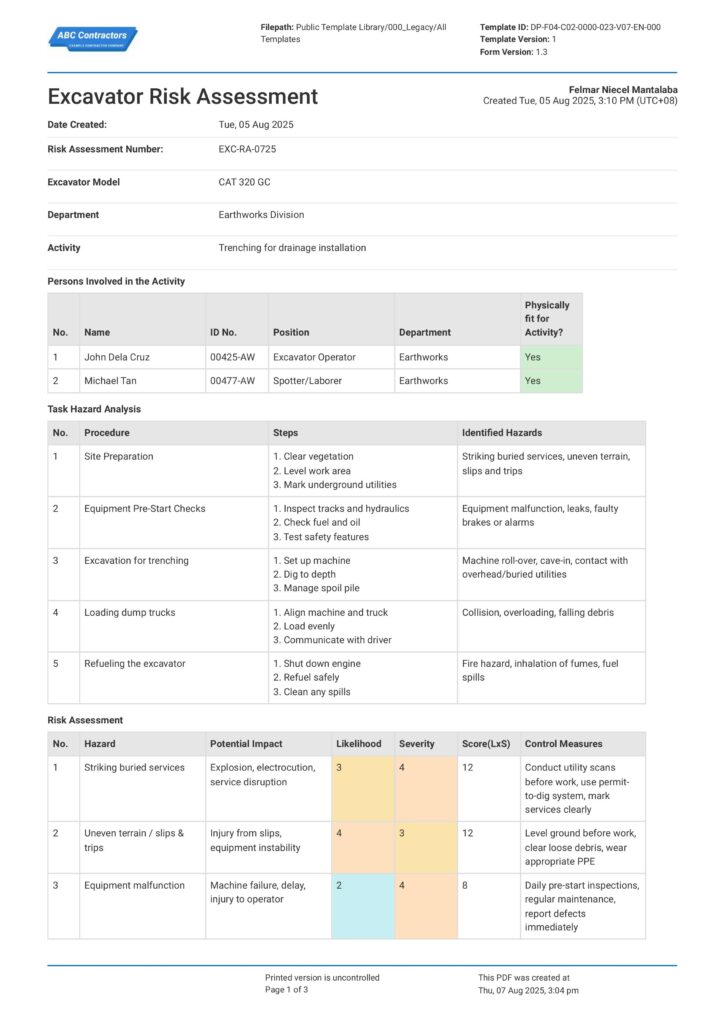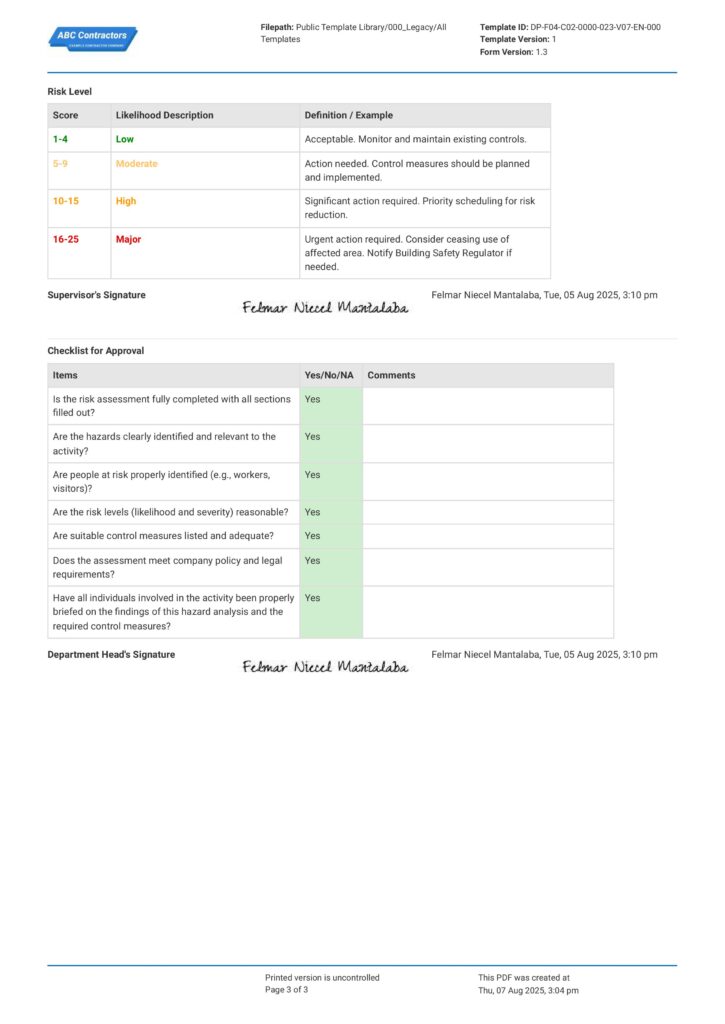Risk Assessment Excavator Template
Start with a free 30-day trial. No credit card required.
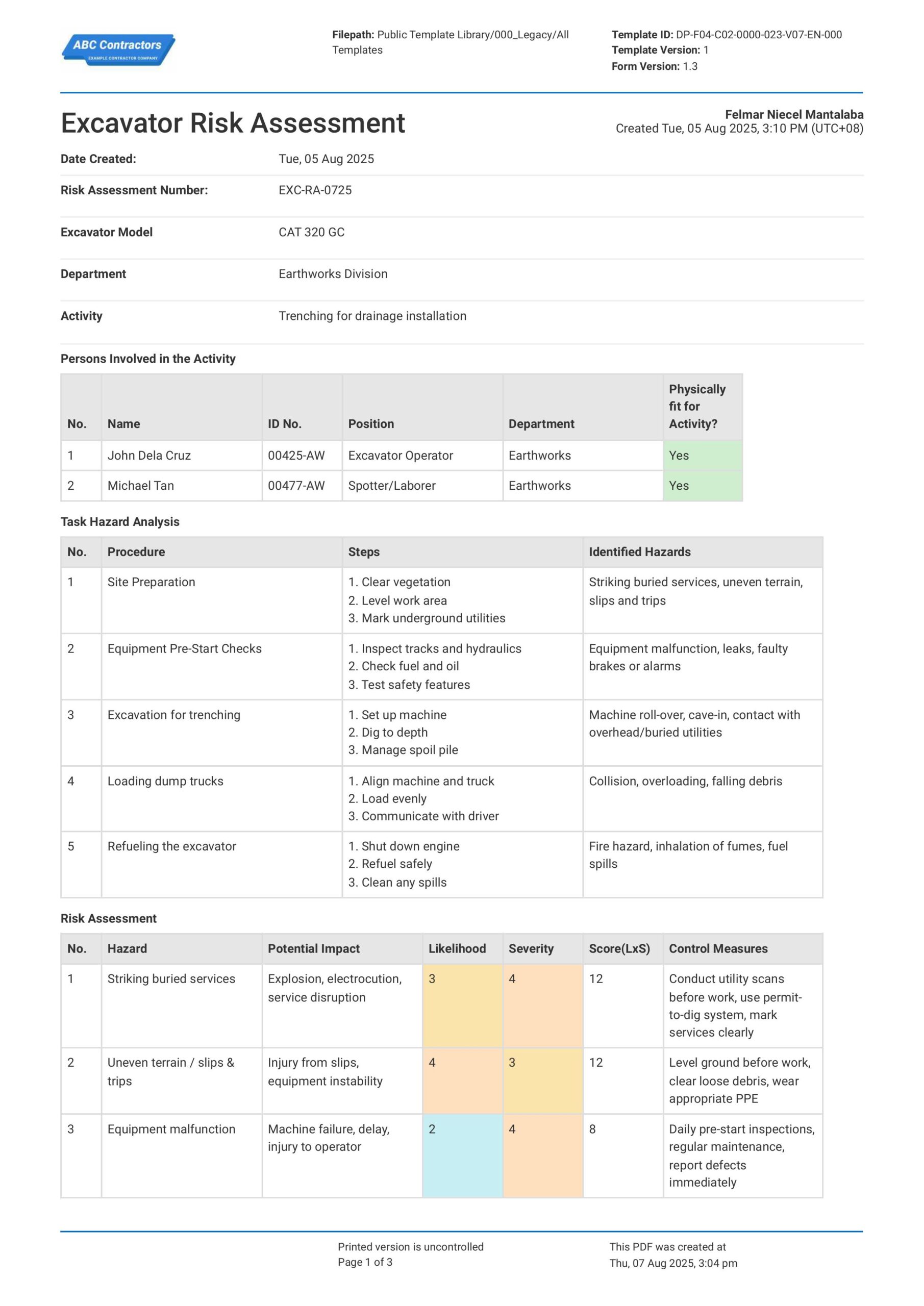
~10,000 employees
~500 employees
~10 employees
~25,000 employees
~200 employees
~1,500 employees
~1,500 employees
What is an Excavator Risk Assessment?
An Excavator Plant Risk Assessment template is a critical tool used in identifying the potential hazards before workers operate an excavator on site. Workers, operators, and site managers, using a fully-capable Excavator Risk Assessment document, are able to assess the risks associated with using excavators and ensure that the appropriate controls are in place – mainly to manage all possible risks around with using excavators, other excavation equipment, and activities.
This risk assessment is typically done prior to commencing excavation activities and should be reviewed on a regular basis as the project progresses. With an Excavator Risk Assessment, a safe environment is ensured, and activities can move smoothly without any problems.
Compare this smart risk assessment for excavators to traditional forms like Word, Excel, or PDF
Use this Excavator Risk Assessment template for free.
Risk Assessment for Excavator – its purpose
Excavators are powerful and useful machines used for digging, demolition, and construction. But these machines have inherent dangers that could harm or kill those who work with or near them. To eliminate or mitigate these hazards, a risk assessment is needed. Below are the reasons for how a risk assessment achieves these.
An Excavator Risk Assessment form aids in preventing injuries and fatalities
A risk assessment for excavators meticulously assess hazards in every procedure in an activity involving excavators. This means that for each step in an activity, all potential risks are dug out and provided with the right measures to ensure that no danger will appear throughout, ensuring safety is always maintained.
Avoid property and asset damage through proper safety management
A risk assessment not only accounts for the safety of the workers working with it and around it. It also protects the excavator itself and other company assets around or involved with the excavator activity. The assessment will also take note of the risks that could potentially damage or destroy company assets and provide them with appropriate control measures.
Comply with legal regulations by conducting regular risk assessments
As discussed before, excavators carry inherent dangers. Therefore, regulations have established standards to ensure safe operations. The Occupational Safety and Health Administration’s (OSHA) excavation standards, 29 Code of Federal Regulations (CFR) Part 1926, Subpart P, contain requirements for excavation and trenching operations.
This provision highlights key safe work practices that can protect workers from cave-ins and other hazards. Failure to follow standards can result in legal consequences that could impact finances and company reputation.
Ensure the correct people are assigned
Untrained personnel can create many hazards. Without proper training and certification, personnel might lack the skill and knowledge to operate the excavator safely. A risk assessment can consider this situation and guarantee the appointment of only trained and certified personnel. The aim is to consistently uphold safety in all excavator operations.
Ensure activity efficiency from identifying hazards and control measures
Risk assessments can help build better procedures. After the hazards have been identified and control measures have been decided, new procedures can be planned. These new procedures can integrate the new safety measures, ensuring that all steps are free from hazards.
Excavator Assessment example procedure
A risk assessment would offer necessary and correct controls for all identified potential risks when operating excavators. See the example procedure below to do an excavator risk assessment.
Choose the appropriate and qualified staff
First, determine who is involved. This step provides managers with insight into who is operating and supporting equipment. Supervisors must appoint qualified staff to carry out the task. This procedure helps to prevent mishandling and mistakes by unskilled personnel.
Identify hazards and risks, and log them in your Excavator Risk Assessment
The next stage is to do a task hazard analysis. In this phase, all individuals engaged in the activity must work together to examine each method and identify any dangers. This strategy ensures that no danger goes unnoticed and that the subsequent steps provide the necessary controls.
Risk scoring
After identifying all dangers in the task hazard analysis, a risk assessment must be performed. Each discovered danger is graded according to its severity and probability. The risk score is determined by multiplying these two variables, which define the controls. Control measures may be developed from the hierarchy of controls. This technique selects the most effective strategy to manage risks using the following hierarchy: elimination, substitution, engineering controls, administrative controls, and personal protective equipment (PPE).
Review risk assessments on a regular basis
Before applying the controls, a review must be completed. Higher-ranking personnel should identify all dangers in a specific activity and ensure each has an adequate control measure. This stage guarantees the safe execution of the activity, ensuring it proceeds smoothly without any delays due to safety concerns.
Frequently Asked Questions
Why use this Excavator Risk Assessment template?
Sitemate's Excavator Risk Assessment template is the best tool for managing excavator-related safety risks because it is already proven by thousands of construction, civil, and earthmoving companies. It comes pre-built to align with risk assessment best practices for excavation work and is quick and easy to use for any type of worker—from site supervisors to field operators. Whether you're working on uneven terrain or operating in busy construction zones, this template helps you identify hazards, implement controls, and document safety procedures with minimal effort and maximum efficiency.
Is this template compliant with regulatory standards?
Yes – this Excavator Risk Assessment template can be configured to align with ISO 45001, OSHA (Occupational Safety and Health Administration) standards in the United States, HSE (Health and Safety Executive) regulations in the UK, and local safety legislation in Australia, New Zealand, and other regions. It's already used by certified contractors across the construction and civil works industries to either obtain or maintain compliance and certification status, ensuring safety processes meet both international standards and local regulatory requirements.
Can I edit this Excavator Risk Assessment for my project or company?
Yes – this template is fully editable using an intuitive drag-and-drop interface. You can edit it to suit your exact needs by adding a wide range of field types, including tables, formulas, sketches, photos, and more. Whether you're capturing simple checklists or complex risk data, the flexibility allows for thousands of possible document configurations. You can also brand your templates with your company logo, custom headers, and specific structural elements. All of this is made possible through Dashpivot’s powerful template builder.
What devices or platforms can I use this Site-Specific Risk Assessment template on?
This template is fully accessible on any device—computer, mobile, or tablet—allowing you to edit and complete forms in the office or directly in the field. Whether you're managing or submitting Site-Specific Risk Assessment forms, the process is smooth and efficient. Once completed, records can be easily generated or exported as PDF or CSV, combining the flexibility of Word, Excel, and PDF with the speed and automation of modern software.
Other popular templates you can use and edit for free
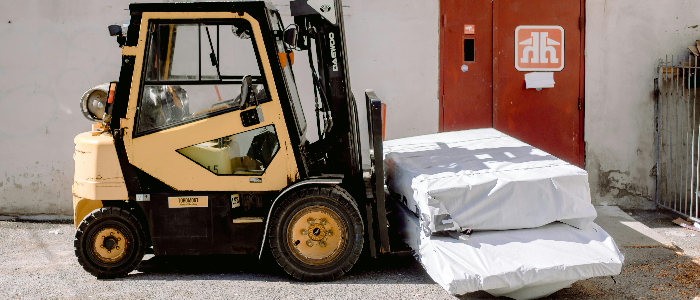
Risk Assessment Forklift
Complete and structure your forklift risk assessments to effectively manage hazards involving the equipment.
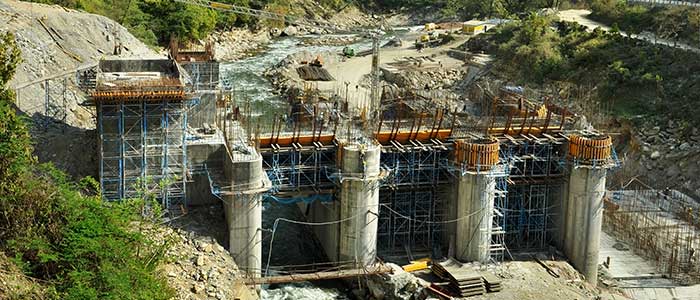
Environmental Risk Assessment
Ensure you have taken the right measures to protect the environment, and your team.

Lone Working Risk Assessment template
Ensure lone workers and their companies know the hazards, controls, and precautions.
This risk assessment was generated with Dashpivot
Easily identify excavator hazards and implement suitable measures. This risk assessment form allows for detailed recording of hazards and safety controls and ensures speedy approval of risk assessment forms, all of which may assist in streamlining the safety management process. This form not only promotes a safe and healthy workplace, but it also improves the company's reputation for standard compliance.
- Complete, edit, and review the Excavator Risk Assessment from any device.
- Export and send assessments as perfectly formatted PDF documents with your company logo.
- Securely store and manage your risk assessments for easy searching and finding.
- Directly notify managers for review and sign-off after completing the assessment.
Sitemate builds best-in-class software tools for built world companies.
